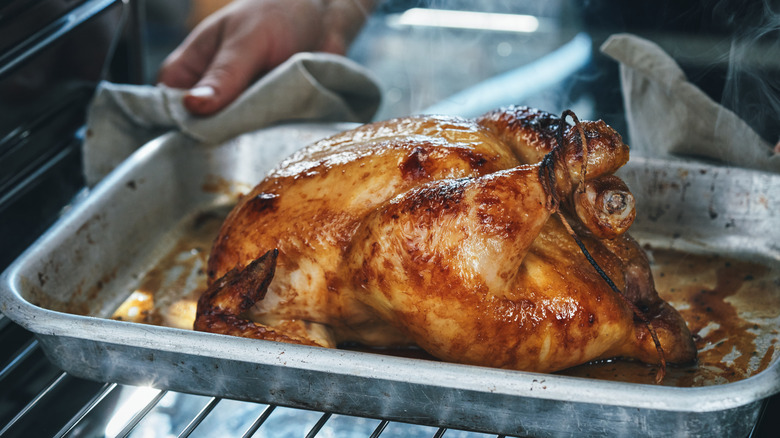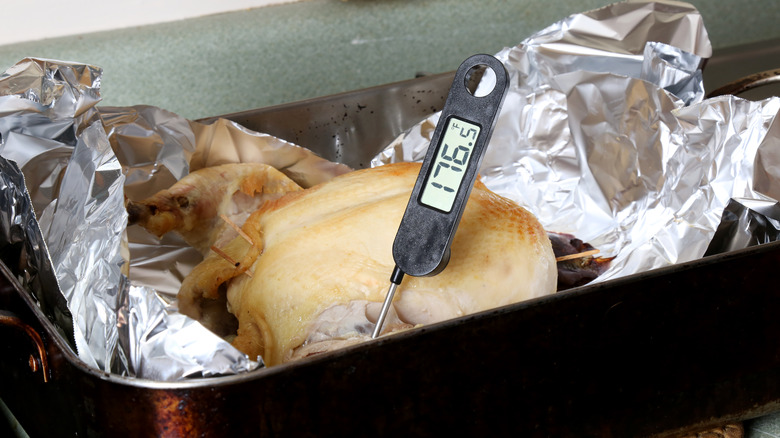Don't Worry, The White Goo Coming Out Of Your Chicken Is Safe
Chicken is one of the most prevalent sources of protein in the American diet. However, it's surrounded by a lot of vital food safety advice. According to the CDC, Salmonella causes more food poisoning than any other bacteria, and at any one time, around 4% of all chicken sold in America may be contaminated. Consequently, it's easy to see why well-meaning authority figures insist on advising us to cook chicken to an internal temperature of 165 degrees Fahrenheit. However, that also means that when your chicken does something unexpected, like oozing a mysterious white goop, it can be alarming. The good news is this is a normal and safe occurrence.
What is this white goo? It's protein and water released from the chicken's muscle fibers. Heat causes these fibers to contract, displacing some of the juices. If the chicken already has a nick in it, or if you insert a meat thermometer into the muscle to check the internal temperature, those juices rush out. As the proteins in the juices cook, they thicken and turn pale, giving them an appearance similar to egg whites.
Strategies to reduce white goo leakage
The similarity between the white goo that comes out of chicken as it cooks and egg whites is no coincidence. The main protein in egg whites is albumin, which accounts for about half of the protein in chicken juices. As long as it's cooked to a safe temperature, it's entirely safe to eat. Still, there's no denying these little specks of solidifying protein can look unappetizing. Thankfully, there are a few things that you can do to reduce the amount of liquid leakage and minimize how gooey the outside of your chicken looks.
The first tip is to avoid cutting or piercing your chicken as it cooks. This will keep the protein-rich juices where you want them — in the meat. However, with the necessity of checking internal temperature, this isn't always possible.
Limiting the time you refreeze and thaw chicken will also decrease goo formation. Each time meat gets frozen, the water in the juices turns to ice crystals that rupture cell walls and create more opportunities for protein leaks. However, cooks have little control over how many times a grocery store chicken has been frozen and thawed. The most comprehensive way to reduce white goo on chicken is to brine the meat before you cook it. Brining keeps the meat moist by causing chemical changes in the proteins that quickly reduce leakage.

